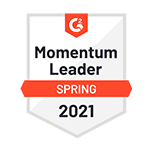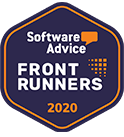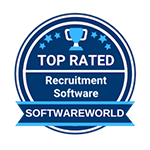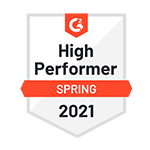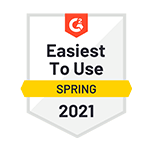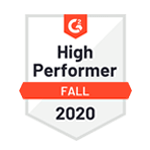Effective recruitment methods are crucial for hiring top talent in any organization. With the job market becoming increasingly competitive, it’s essential to employ effective recruitment methods to attract and retain the best candidates. In this article, we will explore various strategies that can help you find and engage top talent for your organization.
20 Plus Best Recruitment Methods for Successful Hiring
Identifying Job Requirements
To clearly define the qualifications and skills necessary for the position is the first and foremost method of recruitment method. It is essential to conduct a thorough analysis of the role and its responsibilities. This analysis should involve collaboration with relevant stakeholders, such as hiring managers, department heads, and team members, to gain a comprehensive understanding of the job requirements. By gathering input from key individuals, you can identify the specific technical skills, educational background, certifications, and prior experience needed for the position.
In addition to technical qualifications, it’s important to consider soft skills and personal attributes that would contribute to success in the role. These may include communication skills, problem-solving abilities, adaptability, leadership potential, teamwork, and attention to detail. Defining these requirements in detail will help ensure targeted recruitment efforts by attracting candidates who possess the necessary qualifications.
Crafting Compelling Job Descriptions
When creating job descriptions, it is crucial to make them engaging and informative to capture the attention of potential candidates. Begin by providing a clear and concise overview of the organization, its mission, and values. Highlight any unique aspects of the role, such as opportunities for growth, challenging projects, or a positive work culture, makes the recruitment methods effective.
Next, clearly outline the responsibilities and expectations for the position. Break down the key tasks and projects that the candidate would be involved in, as well as any specific goals they would be expected to achieve. Emphasize the impact and value the role brings to the organization to make it enticing.
In addition to the requirements discussed earlier, explicitly list the necessary qualifications, skills, and experience required for the position. Mention any preferred qualifications that would be advantageous but are not mandatory. Be mindful of using inclusive language and avoid any potential biases to ensure a diverse pool of applicants.
Lastly, provide information on the application process, including how to submit a resume or application, any required documents, and the deadline for submission. Include contact information for inquiries and communicate the organization’s commitment to equal employment opportunities.
Leveraging Social Media Platforms
Social media platforms have become valuable tools for reaching a wider audience and promoting job openings. Identify the platforms that are most popular among your target audience and establish a presence there. Create compelling posts that highlight the unique aspects of the role, such as the exciting projects, growth opportunities, and positive work environment.
Utilize eye-catching visuals, such as images or videos, to accompany your job postings and increase engagement. Encourage current employees to share the job posts on their personal social media accounts to expand the reach even further.
In addition to organic posts, consider utilizing paid advertising options on social media platforms to target specific demographics and increase visibility. This can help ensure that your job openings are seen by a relevant and interested audience.
Tapping into Professional Networks
Professional networks, particularly platforms like LinkedIn, provide a valuable opportunity to connect with qualified candidates and tap into their networks for referrals. Utilize these platforms to create a professional and engaging company page that showcases the organization’s culture, values, and job openings.
Join industry-specific groups and participate in relevant discussions to expand your network and raise awareness of the job opportunities within your organization. Actively engage with potential candidates by sharing relevant content, participating in conversations, and reaching out to individuals who demonstrate the desired qualifications.
Encourage employees to update their LinkedIn profiles to reflect their current roles and promote the organization. This can help attract potential candidates who view employee profiles and discover the job openings through their connections.
Engaging with Recruitment Agencies
Collaborating with reputable recruitment agencies can be beneficial, especially when seeking access to their extensive talent pools and expertise in finding suitable candidates. Research and select recruitment agencies that specialize in the industry or job roles you are hiring for.
Communicate your specific requirements and provide a detailed job description to the recruitment agency. Share information about your organization, its values, and culture to ensure the agency has a clear understanding of your needs and can represent your company accurately to potential candidates.
Stay engaged with the recruitment agency throughout the process, providing feedback on candidates and discussing any necessary adjustments to the search criteria. This collaboration can save time and effort while ensuring that you have access to a qualified pool of candidates.
Hosting Recruitment Events
Organizing recruitment events, such as job fairs or open houses, allows you to interact directly with potential candidates and showcase the organization’s opportunities. Plan and promote the event well in advance to attract a diverse range of attendees.
During the event, provide informative presentations about the organization, the available positions, and the benefits of working with your company. Encourage attendees to ask questions and engage in conversations with representatives from different departments.
Create networking opportunities where candidates can interact with current employees and learn about their experiences working at the organization. Consider providing information on the application process and even conducting on-site interviews to expedite the hiring process.
Employee Referral Programs
Encouraging current employees to refer qualified candidates is an effective way to tap into their networks and attract potential hires. Establish an employee referral program that clearly outlines the eligibility criteria, rewards, and process for submitting referrals.
Communicate the program to all employees through internal communications, such as emails, newsletters, or intranet postings. Clearly highlight the types of positions that are eligible for referral and the specific skills or qualifications you are seeking.
Consider offering incentives or rewards to employees whose referrals result in successful hires. This can be in the form of monetary bonuses, additional vacation days, recognition, or other appealing incentives. Regularly update employees on the status of their referrals and show appreciation for their contributions.
Developing an Employer Brand
Building a strong employer brand is crucial to attract top talent. Promote the organization’s values, culture, and employee benefits to differentiate yourself from competitors. Showcase any unique perks, such as flexible work arrangements, professional development opportunities, or a positive work-life balance.
Utilize multiple channels, including your company website, social media platforms, and industry-specific forums, to communicate your employer brand consistently. Share employee testimonials and success stories to demonstrate the positive experiences and growth opportunities within the organization.
Engage with current employees to ensure their experiences align with the employer brand being promoted. Encourage them to share their experiences on online platforms and provide feedback on areas where the organization can improve its employer brand.
Implementing Online Job Boards
Online job boards and platforms offer a wide reach and accessibility to a broader audience of potential candidates. Utilize popular job boards that cater to your industry or target audience. Post your job openings with detailed descriptions and clear instructions for application submission.
Optimize your job postings with relevant keywords to increase visibility and attract candidates who are actively searching for opportunities. Regularly monitor and update your job postings to ensure they remain active and accurate.
Consider exploring niche job boards or platforms that cater to specific industries or job roles. These platforms often attract candidates with specialized skills and experiences, increasing the chances of finding highly qualified individuals.
Conducting Effective Interviews
Conducting structured interviews using behavioral and competency-based questions is essential to assess candidates’ skills, experiences, and cultural fit. Prepare a set of standardized questions in advance that are tailored to the specific job requirements.
Behavioral questions aim to uncover how candidates have handled specific situations in the past. Ask candidates to provide examples of challenges they have faced, how they approached them, and what the outcomes were. This helps assess their problem-solving abilities, decision-making skills, and their fit within the organization’s culture.
Competency-based questions focus on assessing candidates’ technical skills and knowledge relevant to the position. These questions help evaluate their proficiency in specific areas and determine if they have the necessary qualifications for the job.
Additionally, consider incorporating practical exercises or case studies into the interview process to assess candidates’ abilities to apply their skills in real-life scenarios. This provides a more holistic evaluation of their capabilities.
Throughout the interview process, take detailed notes to compare candidates objectively and ensure consistency in the evaluation. Collaborate with the hiring team or panel to gather multiple perspectives on each candidate and make informed decisions.
Remember to provide timely and constructive feedback to all candidates, whether they are selected or not. This contributes to a positive candidate experience and reflects well on the organization’s reputation.
Utilizing Video Interviews
Incorporating video interviews into the recruitment process offers a convenient and efficient way to screen candidates remotely, particularly for geographically dispersed positions. It eliminates the need for candidates to travel for initial interviews and allows for flexibility in scheduling.
Video interviews can be conducted through various platforms, such as Skype, Zoom, or dedicated video interviewing software. Prepare a set of standardized interview questions and guidelines to ensure consistency in the evaluation process.
During the video interview, assess candidates’ communication skills, professionalism, and non-verbal cues. Pay attention to their ability to articulate their thoughts clearly and engage in meaningful conversation. Take notes and record the interviews for reference during the evaluation stage.
Assessing Skills and Cultural Fit
Employing assessment tools and exercises is crucial to evaluate candidates’ technical skills and determine their alignment with the organization’s culture. This step helps ensure that candidates not only possess the necessary qualifications but also fit well within the team and the overall work environment.
Design practical exercises or case studies that simulate real work scenarios to assess candidates’ problem-solving abilities, critical thinking skills, and their approach to decision-making. These exercises can be tailored to specific job roles and allow candidates to showcase their skills in action.
Additionally, conduct behavioral assessments or cultural fit interviews to evaluate how candidates’ values, work styles, and behaviors align with the organization’s culture. Ask questions that probe their teamwork abilities, adaptability, and how they handle challenges in the workplace.
Employing Psychometric Testing
Psychometric assessments provide valuable insights into candidates’ cognitive abilities, personality traits, and work styles. These tests help evaluate factors such as problem-solving skills, emotional intelligence, leadership potential, and decision-making abilities.
Partner with reputable assessment providers or consultants who specialize in psychometric testing to ensure accuracy and reliability. Select assessments that align with the specific job requirements and the desired competencies for the role.
Interpret the results of psychometric tests carefully, considering them as part of the overall evaluation process rather than making decisions solely based on the test outcomes. Use the results as a reference point to understand candidates’ strengths, development areas, and their potential fit within the organization.
Offering Competitive Compensation
Providing a competitive salary and benefits package is essential to attract top talent and demonstrate the organization’s commitment to employee well-being. Conduct thorough research on industry standards and salary benchmarks to ensure that your compensation packages are competitive.
Highlight any additional benefits and perks, such as health insurance, retirement plans, flexible work arrangements, paid time off, or professional development opportunities. Clearly communicate these offerings in job descriptions and during the recruitment process to showcase the value candidates can expect from joining the organization.
Consider tailoring compensation packages to individual candidates based on their experience, qualifications, and the value they can bring to the organization. This personalized approach can help attract high-caliber candidates who may have multiple job offers.
Providing Opportunities for Growth
Emphasize the opportunities for professional development and career advancement within the organization to attract ambitious candidates seeking long-term growth. Highlight any training programs, mentorship initiatives, or tuition reimbursement options available to employees.
Clearly communicate the potential career paths and advancement opportunities within the organization. Illustrate success stories of employees who have grown their careers within the company to demonstrate that the organization values and supports employee growth.
During the recruitment process, discuss potential growth trajectories with candidates and align their career aspirations with the opportunities available within the organization. Showcasing a clear path for development and advancement can be a compelling factor for top talent.
Embracing Diversity and Inclusion
Promoting diversity and inclusion in recruitment efforts is crucial to fostering a diverse workforce that brings different perspectives and experiences to the organization. Develop strategies to attract candidates from diverse backgrounds and ensure equal opportunities for all applicants.
Review and revise job descriptions, ensuring they use inclusive language and reflect a commitment to diversity. Partner with diverse professional organizations, attend diversity-focused job fairs, and leverage diverse networks to broaden the candidate pool.
Establish diversity goals and metrics to track progress in hiring diverse talent. Implement blind resume screening processes to mitigate unconscious biases during the initial stages of candidate evaluation.
Cultivating Employee Testimonials
Encourage current employees to share positive experiences and testimonials about working for the organization. These testimonials can be used in recruitment materials, on the company website, and on social media platforms to enhance the organization’s reputation as an employer of choice.
Provide platforms or channels for employees to share their stories, such as employee spotlight articles, internal newsletters, or video testimonials. Highlight various aspects of the employee experience, such as work-life balance, growth opportunities, and the organization’s supportive culture.
Consider implementing employee referral programs where current employees can refer potential candidates and share their positive experiences. Employee testimonials carry significant weight and can attract candidates who value the insights and perspectives of those already working in the organization.
Showcasing Success Stories
Highlight success stories of current employees to showcase the organization’s track record of supporting and empowering its workforce. These success stories can inspire potential candidates and demonstrate the organization’s commitment to employee growth and development.
Create case studies or success profiles that highlight specific achievements or career progression of employees within the organization. Share these stories through various channels, such as the company website, social media platforms, or recruitment materials.
Consider conducting interviews or video testimonials with employees who have achieved notable success within the organization. Allow them to share their experiences, challenges, and growth journey to inspire and attract candidates who are seeking similar opportunities.
Leveraging Employee Benefits
Emphasize attractive employee benefits to create a competitive advantage and attract top talent. Highlight benefits such as flexible work arrangements, wellness programs, work-life balance initiatives, and any unique perks that set your organization apart.
Clearly communicate these benefits in job descriptions and during the recruitment process. Illustrate how these offerings contribute to employee well-being, productivity, and overall job satisfaction.
Share stories or testimonials from employees who have benefited from specific employee benefits. This helps potential candidates understand the tangible impact of these benefits on their work-life balance and overall quality of life.
Creating an Appealing Company Culture
Cultivate a positive and inclusive company culture that values collaboration, innovation, and employee well-being. Clearly define and communicate the organization’s core values and the behaviors that align with these values.
Highlight aspects of the company culture that make it unique and appealing to potential candidates. This can include team-building activities, employee recognition programs, a supportive work environment, or a commitment to corporate social responsibility.
During the recruitment process, provide opportunities for candidates to interact with current employees and gain insights into the company culture. Encourage open and honest communication about the organization’s values, expectations, and the ways in which the culture supports employee growth and success.
Conducting Background Checks
Conducting thorough background checks is essential to verify candidates’ qualifications, employment history, and references. This process helps ensure that the information provided by candidates is accurate and reliable.
Partner with professional background screening services or dedicate resources within the organization to conduct comprehensive checks. This may include verifying educational degrees, employment history, professional certifications, and conducting reference checks.
Comply with legal requirements and data privacy regulations when conducting background checks. Communicate the background check process to candidates, ensuring transparency and obtaining their consent.
Providing Clear Communication
Maintain transparent and timely communication with candidates throughout the recruitment process to ensure a positive candidate experience. Clearly communicate each stage of the process, including timelines, expectations, and next steps.
Acknowledge receipt of applications promptly and provide regular updates on the status of candidates’ applications. Communicate with candidates even if they are not selected, offering feedback and expressing appreciation for their interest in the organization.
Respond promptly to candidate inquiries or concerns and provide avenues for candidates to seek clarification or additional information. Clear communication fosters a positive impression of the organization and enhances the candidate experience, regardless of the final hiring decision.
Embracing Remote Work
Adapt to the changing work landscape in your recruitment methods. Such as by embracing remote work options, which can attract candidates seeking flexible work arrangements. Additionally, clearly communicate the organization’s remote work policies and any expectations or requirements associated with remote positions.
Highlight the benefits of remote work, such as increased flexibility, improved work-life balance, and reduced commuting time and expenses. Also, showcase the organization’s technology infrastructure and support systems that enable effective remote collaboration.
Therefore, during the recruitment process, discuss remote work options with candidates and address any concerns they may have. Clearly outline the communication channels, collaboration tools, and performance expectations for remote positions in the recruitment methods.
Adopting AI-powered Recruitment Tools
Leverage AI-powered recruitment tools, such as applicant tracking systems (ATS) and automated resume screening, to streamline and optimize the recruitment process. Additionally, ATS systems help manage job postings, applications, and candidate data efficiently.
Automated resume screening tools use AI algorithms to analyze resumes and identify candidates who meet specific criteria or qualifications. These tools save time by shortlisting candidates based on keywords, skills, and experience.
When adopting AI-powered tools, ensure they are designed and implemented ethically and without bias. Therefore, regularly review and refine the algorithms to minimize potential biases and ensure fair evaluation of candidates. This AI incorporation will revolutionize your recruitment methods.
Monitoring and Optimizing Recruitment Metrics
Continuously track and analyze recruitment metrics for effective recruitment method. Metrics such as time-to-hire and cost-per-hire, to identify areas for improvement and enhance recruitment strategies. Additionally, monitor the effectiveness of different recruitment channels, sources, and methods to optimize resource allocation.
Evaluate the quality of hires by tracking metrics such as employee retention rates, performance ratings, and employee satisfaction surveys. Therefore, this helps assess the success of recruitment efforts in selecting candidates who are a good fit for the organization.
Regularly review and refine recruitment strategies based on the insights gained from the collected data. Adjust sourcing strategies, job descriptions, or selection criteria as needed to attract and hire the best candidates efficiently.
By continuously monitoring and optimizing recruitment metrics, organizations can make data-driven decisions and improve the overall recruitment process.
By employing these effective recruitment methods, organizations can increase their chances of attracting and retaining top talent, ultimately driving their success in a competitive market.
Conclusion
Consequently, implementing effective recruitment methods is crucial for attracting and hiring top talent. By identifying job requirements, crafting compelling job descriptions, leveraging social media, and embracing diverse strategies, organizations can enhance their chances of finding the best candidates. Additionally, incorporating employee referral programs, showcasing company culture, and utilizing AI-powered tools can further optimize the recruitment methods. So, remember, attracting and retaining top talent is an ongoing effort that requires continuous evaluation and adaptation.
Visit our website for more information.
FAQs
- What are the key steps in the recruitment process?
The recruitment process typically involves several key steps, including:
- Identifying job requirements
- Sourcing candidates
- Screening and shortlisting
- Conducting interviews
- Assessing candidates
- Making job offers
- Onboarding new hires
- How can I make my job descriptions more appealing?
To craft compelling job descriptions, consider the following:
- Clearly outline job responsibilities and qualifications
- Highlight the company’s culture and values
- Use engaging language and keywords
- Provide an overview of growth opportunities
- Mention any unique perks or benefits offered
- Is social media one of an effective recruitment methods?
Absolutely! Social media platforms, such as LinkedIn, Facebook, and Twitter, offer excellent opportunities to reach a wide audience of potential candidates. You can leverage these platforms to showcase your company culture, share job postings, and engage with candidates directly.
- How can I ensure diversity and inclusion in my recruitment methods?
To promote diversity and inclusion, you can:
- Use inclusive language in job postings
- Proactively source candidates from diverse backgrounds
- Establish diversity goals and hold recruiters accountable
- Provide bias training for interviewers
- Foster an inclusive company culture that values diversity
- What are some benefits of employee referral programs?
Employee referral programs can bring numerous advantages, such as:
- Higher quality hires
- Reduced recruitment costs
- Faster time-to-fill positions
- Improved employee engagement and satisfaction
- Strengthened company culture and camaraderie
- How can AI-powered recruitment tools enhance the recruitment methods?
AI-powered recruitment tools can automate and streamline various aspects of the hiring process, including resume screening, candidate sourcing, and interview scheduling. Therefore, these tools can save recruiters time and effort, allowing them to focus on higher-value tasks and improve overall efficiency.




